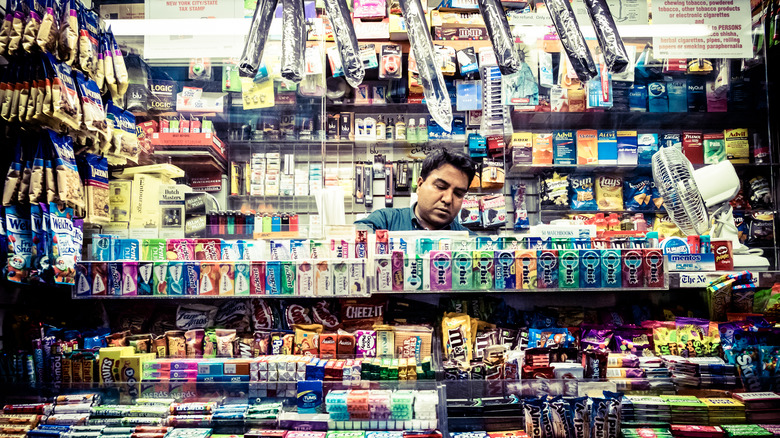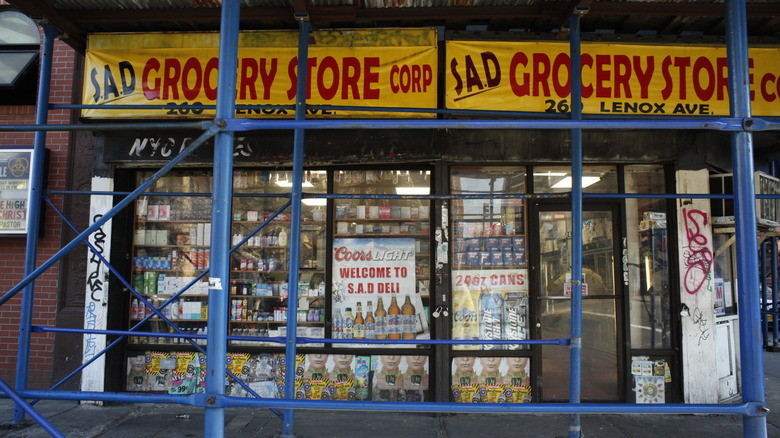What Makes A New York City Convenience Store A Bodega
One of the great things about New York City, besides the buzzing energy of the place, is just how walkable it is. It's considered the most walkable city in the United States and, believe it or not, that has an impact on what kinds of stores thrive there. Bodegas are a great example of this.
In any other town, a bodega would probably be called a convenience store or an international market. According to the New York Health Department, a bodega only has three requirements to be called such: No more than two cash registers, it must sell milk, and it sells mostly food but isn't a specialty food store like a candy shop or a butcher. You can usually find cigarettes, lottery tickets, and household necessities like toilet paper and toothpaste inside. Some of them are labeled as delis and serve sandwiches. Many of them are open until late into the night or even a full 24 hours, making them highly convenient.
If you're wondering what makes a bodega different from a convenience store, you may be disappointed to learn that there isn't really a major difference. There are plenty of convenience stores scattered across major American metropolitan areas which, if they were in New York City, would be called bodegas. Since they aren't, they're called convenience stores. It's a regional difference in dialect, more than anything.
Where did bodegas come from?
Bodegas are originally a Cuban concept that came to New York by way of Puerto Rican immigrants in the early 20th century, according to Queen Sofia Spanish Institute. In Spanish, the word itself originally referred to either the hull of a ship or a wine cellar, with the grocery connotation not coming until later on. When bodegas first started popping up in NYC, they mostly served Puerto Rican neighborhoods but quickly expanded to the rest of the city.
It's hard to imagine another American city where bodegas could be as successful as they are in New York City. The convenience of the bodegas is their proximity to wherever you happen to be. There are estimated to be more than 13,000 bodegas in NYC, which means that no matter where you go, there's always going to be one just around the corner. Since most people are walking anyway, people pass these stores on foot. Marketers talk about foot traffic as a means to generate customers, and it doesn't get much more straightforward than this.
Although there are large grocery stores in New York, the cost of real estate and the lack of cars makes it difficult to compete with the bodegas on a convenience level. But, it's more than pure economics that helps bodegas compete. New Yorkers love their corner stores. A friendly bodega owner and a resident cat keeps people coming back to support local business.

